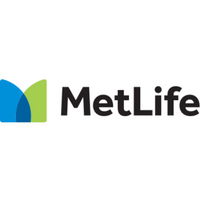Increasing engagement: ways to make your insurance benefits more visible and valued by employees

While salary remains an important consideration, wider benefits packages are now seen to be a major contributory factor in both recruitment and retention of quality staff. Obvious and well-established benefits such as pensions and life insurance are now being supplemented by critical illness, income protection, medical and dental protection as well as options such as season ticket loans or gym memberships.
Enlightened employers are already aware that a rounded and well-communicated pay and benefits package is a key factor in recruiting staff. However, if your benefits aren’t being communicated effectively, then under-utilisation may mean employees don’t ever realise the true value of their benefits – both financially and as a retention aid.
Based on our recent Employee Benefits Trends Study, we take a look at the four key takeaways to ensure your employees are engaged with their insurance benefits.
1. Be clear and concise
Since April 2020, it has been a requirement of section one of the Employment Rights Act 1996 that you must provide clear information to the employee on their working terms and conditions, including their benefits. Seize this as an opportunity! It may sound obvious, but your workforce is diverse and not everyone will understand the benefits they have access to.
Make it clear from the outset what each of the benefits available are so the employee can get an understanding of the total value of their employment benefits. Then, as they move through onboarding, it becomes critical to communicate the benefits available at enrolment so that the employee can make the right decision based on their current life-stage. To ensure an understanding, consider the information you include such as a simple FAQ document to cover off the basics – e.g. ‘what is critical illness and how does it benefit me?’. Make it clear how their benefits can help support and protect them as they navigate the new challenges that life brings.
2. Targeted, ongoing communications
There’s often a lot of communication that happens around enrolment and/or the launch of benefits but once the initial flurry has died down, employees can quickly forget about what they have signed up for. With insurance benefits especially, they are easily pushed to the back of the mind as daily life takes over. However, in order for employees to see the value in their insurance, they need to have regular reminders which are targeted to them. Ensure that you implement a regular communication programme throughout the year so that when enrolment opens again, employees don’t deselect an option just because they had forgotten they had it.
3. Relevance and timeliness
Employer communications help employees see the role benefits can play in their lives. By framing benefits in the context of your employees’ lives, they will feel reassured by the role their benefits play in their lives. During periods of uncertainty and stress, it’s prudent to ensure that your employees know they are covered and, if provided by the insurer, are able to access to any additional wellness services. These types of services, such as Employee Assistance Programmes, can be a great resource for employees during difficult times and move beyond just the financial aspects into health and wellbeing too. Through accessing these services, your employees can self-serve and seek help in a way that suits them, reducing any impact on performance.
4. Complementary benefits ‘bundles’
One of the ways to make benefits more valuable in the eyes of your employees is to show how they work together to enhance or complement another offering. For example, if an individual is particularly keen on ensuring their health is taken care of, then it would be valuable to them to see private medical and dental in place. If their focus is on ensuring their family is taken care of, then a focus on critical illness and life insurance would work well for them. Developing communications around grouped ‘needs’ helps demonstrate the worth of the insurance benefit to the employee and reinforces their decision-making process.
In the current context of a global pandemic, there has never been a better time for employers to review their benefits offering to ensure they resonate with staff and the challenges they may face. Often physical and mental health are supported, but financial support can be missed even though it is a benefit area that is becoming increasingly important.
The communication from the employer must highlight the value of employer-provided insurance benefits to their employees – and clearly highlighting which services the wider family unit are able to access. As with any insurance, the protection provided can help relieve to some degree the uncertainty currently being experienced indiscriminately. Whereas before, people may not have been receptive to understanding the benefits of insurance, there has perhaps never been a better time for employers to show they care.
The author is Adrian Matthews, Employee Benefits Director, Metlife.
This article is provided by Metlife.
In partnership with MetLife
At MetLife our aim is to help businesses prepare for the future, perform at their best and protect their people.





